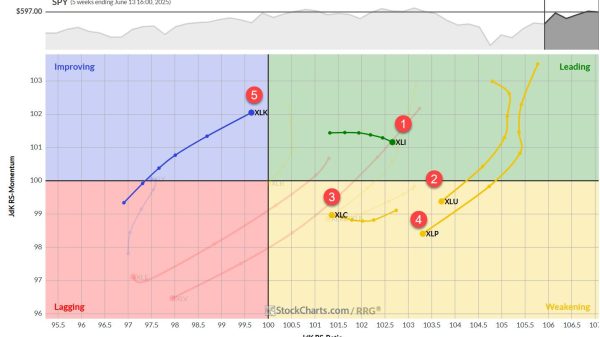What Is ROI in Crypto, and How Do You Calculate It?
People who aren’t familiar with crypto may not understand what ROI has to do with crypto.
First of all, we need to define “What is ROI in crypto?” Besides, it is important to understand “How to calculate return on investment?”
ROI stands for “Return on Investment.” It is a financial metric used to assess the profitability of an investment relative to its cost.
Importantly, ROI measures the percentage gain or loss generated on an investment relative to its initial investment amount.
In the crypto world, ROI is an essential metric for evaluating the performance of different investments, such as buying and holding cryptocurrencies or investing in crypto-related projects. Here, we’ll explore ROI in cryptocurrencies, the factors influencing it, and its significance.
Hopefully, it isn’t hard to remember, “What is ROI in crypto?” Now, let’s learn how to calculate return on investment.
How to calculate return on investment?
To calculate ROI in crypto, the formula is as follows:
ROI = ((Current Value of Investment – Cost of Investment) / Cost of Investment) * 100
For example, suppose you invested $1,000 in a cryptocurrency, and its current value is $2,000. Using the formula, the ROI would be:
ROI = (($2,000 – $1,000) / $1,000) * 100 = 100%
In this scenario, the ROI is 100%, indicating that the investment has doubled in value.
ROI is significant in the crypto world for the following reasons:
Performance evaluation: ROI allows investors to evaluate the performance of their crypto investments. It provides a quantitative measure of profitability, helping investors assess whether their investments have generated positive returns or incurred losses.
Investment decision-making: ROI serves as an important factor in investment decision-making. Investors often compare the potential ROI of different cryptocurrencies or projects to determine where to allocate their funds.
Risk assessment: ROI helps investors understand the risks associated with investing in cryptocurrencies. Higher ROI potential usually comes with higher risks, and investors need to assess whether the potential returns justify the risks involved.
Benchmarking: ROI enables investors to compare their performance against industry benchmarks or other investments. It helps in determining whether their investment strategy is outperforming or underperforming the market.
Setting realistic expectations: ROI provides a realistic expectation of returns based on historical performance and market conditions. It helps investors set realistic goals and manage their expectations, avoiding overestimating or underestimating potential returns.
Portfolio diversification: ROI analysis helps in portfolio diversification by considering different cryptocurrencies and investment strategies. Balancing high-risk, high-reward investments with lower-risk, more stable ones can optimize the overall portfolio ROI.
Long-term planning: ROI plays a crucial role in long-term financial planning. By considering the potential ROI of crypto investments, investors can make informed decisions regarding saving, retirement, or wealth accumulation strategies.
Disadvantages of ROI
While Return on Investment (ROI) can be a useful metric for evaluating the profitability of investments in the crypto world, it is essential to be aware of the potential pitfalls of relying solely on ROI when making investment decisions.
Here are some pitfalls to consider:
Volatility and risk: Cryptocurrencies are known for their high price volatility, which can lead to substantial gains but also significant losses. Relying solely on ROI without considering the associated risks can result in unexpected and detrimental outcomes. It is crucial to assess the risk profile of cryptocurrencies and diversify investments accordingly.
Short-term perspective: ROI calculations often focus on short-term gains or losses. However, cryptocurrencies are a relatively new and evolving asset class. Depending solely on short-term ROI may lead to overlooking the long-term potential of certain projects or technologies.
It is important to consider the broader fundamentals, development progress, and adoption potential of cryptocurrencies beyond immediate returns.
Lack of fundamental analysis: ROI calculations primarily consider the price appreciation or depreciation of cryptocurrencies. However, solely relying on price movements may neglect important fundamental factors such as technology, team, partnerships, community support, and market demand. A thorough fundamental analysis is crucial for assessing the long-term viability and growth potential of cryptocurrency investment.
Market manipulation: The crypto market is susceptible to market manipulation, including pump-and-dump schemes, price manipulation, and false information dissemination. Depending solely on ROI without considering potential market manipulation can lead to distorted investment decisions and unintended losses.
What do traders need to know about ROI and crypto?
There is no lack of problems. It is vital to be aware of various challenges. So, let’s continue!
Limited market adoption: While cryptocurrencies have gained significant attention and adoption in recent years, their overall adoption and mainstream acceptance are still relatively limited. Relying solely on ROI without considering the broader market adoption and use cases may result in investments in projects with limited real-world utility and long-term potential.
Regulatory and legal risks: The regulatory landscape for cryptocurrencies is evolving, and regulatory actions can significantly impact the value and ROI potential of investments. Investing in cryptocurrencies without considering the potential regulatory risks and uncertainties can lead to unexpected legal hurdles and financial losses.
Emotional decision-making: Depending solely on ROI can sometimes lead to emotional decision-making. Investors may be tempted to chase quick profits or panic sell during market downturns, which can negatively impact their overall investment performance.
It is important to maintain a rational and disciplined approach to investment decisions based on thorough analysis and risk management.
Lack of diversification: Focusing solely on ROI without considering diversification can expose investors to unnecessary risks.
Diversifying across different cryptocurrencies, asset classes, and investment strategies can help mitigate potential losses and provide a more balanced and resilient investment portfolio.
In conclusion, traders should learn more about crypto. It is important to remember, “What is ROI in crypto?”
ROI is a fundamental metric in the crypto world for evaluating investment performance. It provides investors with insights into the profitability of their crypto investments.
However, it is important to note that ROI alone should not be the sole factor in investment decisions, as cryptocurrencies are highly volatile and subject to various risks. Comprehensive research, understanding project fundamentals, and considering risk tolerance is essential when assessing potential ROI in the crypto market.
The post What Is ROI in Crypto, and How Do You Calculate It? appeared first on FinanceBrokerage.
























